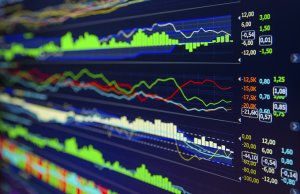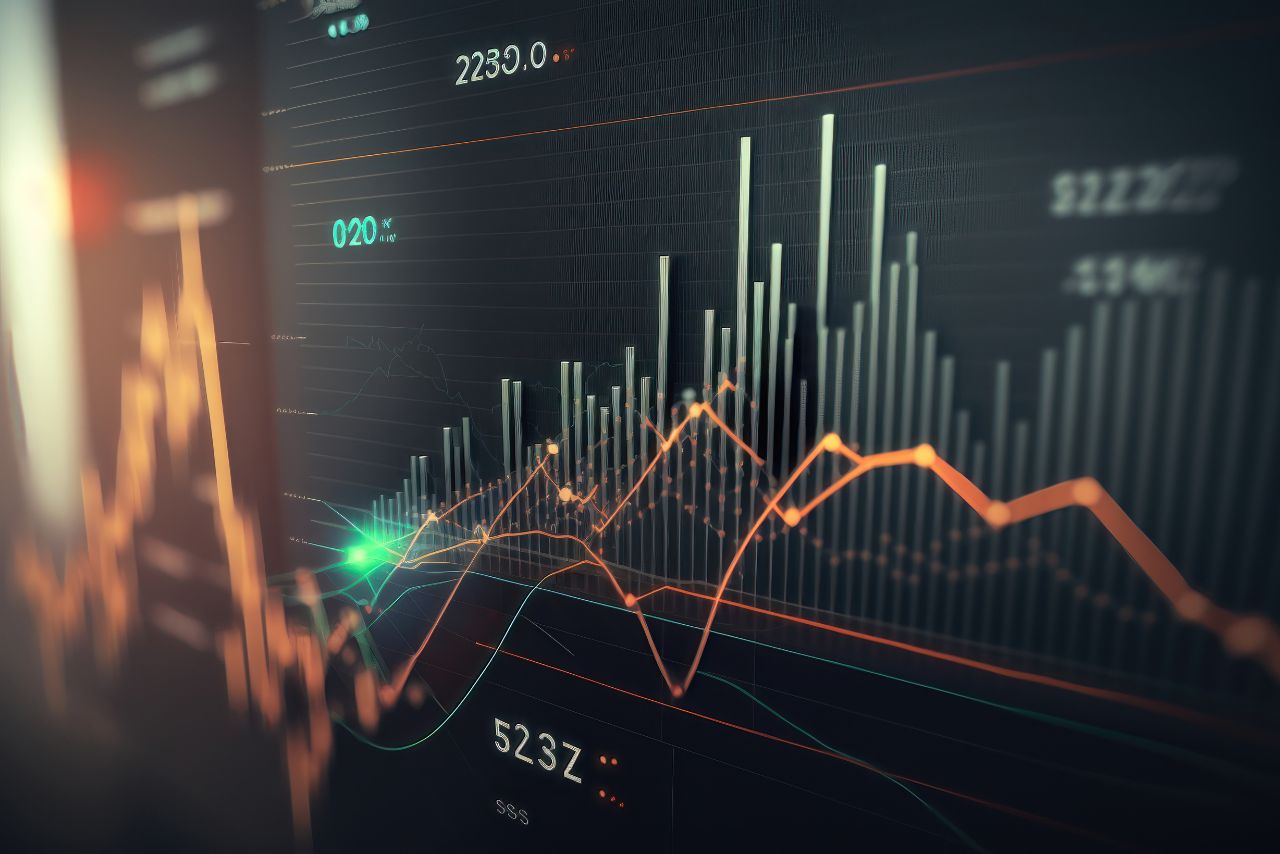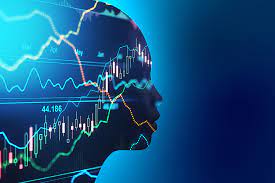
Introduction
Algorithmic trading has revolutionized the financial markets, empowering traders with advanced tools and automation. In this article, we will delve into the concept of algorithmic trading, explore various strategies, discuss its benefits, and examine future trends. With a focus on efficiency and profitability, algorithmic trading opens new horizons for traders in an increasingly competitive landscape.
How Algorithmic Trading Works
Algorithmic trading relies on sophisticated algorithms and automation to execute trades based on predefined strategies. By leveraging technology, traders can swiftly analyze market conditions, identify opportunities, and execute trades at high speeds. This approach eliminates human emotions and manual errors, ensuring precise and timely trade execution.
Common Algorithmic Trading Strategies
Algorithmic trading, also known as automated trading, has revolutionized the financial markets, allowing traders to capitalize on opportunities with unparalleled speed and precision. In this article, we delve into the realm of algorithmic trading and explore the most common strategies employed by traders to maximize their trading outcomes. From market-making to trend-following, each strategy harnesses the power of algorithms to navigate the complexities of the market. So, let’s embark on a journey to uncover the secrets of algorithmic trading and understand how these strategies can propel your trading success.
1. Market-making strategy
One of the fundamental algorithmic trading strategies is the market-making strategy. With algorithmic precision, market makers provide liquidity to the market by placing simultaneous buy and sell orders for a particular security. By continuously monitoring bid and ask prices, these algorithms capitalize on the spread between them, generating profits while ensuring market liquidity.
2. Trend-following strategy
In the world of algorithmic trading, the trend-following strategy stands as a powerful tool to identify and ride market trends. By analyzing historical price data and technical indicators, these algorithms can detect the direction of the trend. Whether it’s an upward or downward trend, algorithmic traders swiftly take long or short positions, respectively, to capture the potential profits resulting from sustained price movements.
3. Arbitrage strategy
Within the realm of algorithmic trading, the arbitrage strategy aims to seize opportunities arising from price discrepancies across different markets or trading venues. These algorithms rapidly identify such disparities, execute trades to capitalize on the differences, and secure risk-free profits before the prices converge. Arbitrage strategies can exploit various types of discrepancies, including geographical, statistical, or temporal disparities.
4. Statistical arbitrage strategy
Statistical arbitrage strategies rely on advanced mathematical models and statistical analysis to identify mispriced assets. These algorithms scrutinize historical and real-time data to pinpoint securities that have deviated from their usual price relationships. By taking long and short positions on the mispriced assets, these algorithms anticipate a reversion to the mean, aiming to capture profits as prices revert to their historical patterns.
5. Mean reversion strategy
The mean reversion strategy thrives on the concept that prices tend to fluctuate around their average value. Algorithmic traders employing this strategy identify assets that have strayed significantly from their mean and execute trades to benefit from the anticipated reversion to the mean. By assuming that extreme price movements will correct themselves, mean reversion strategies aim to generate profits as prices move back towards their average.
6. Volume-weighted average price (VWAP) strategy
The VWAP strategy targets the execution of large orders without causing substantial market impact. These algorithms calculate the volume-weighted average price based on the trading volume over a specific time period. By breaking down large orders into smaller ones and spreading them out over the defined time frame, the algorithm aims to match the volume-weighted average price. This strategy enhances execution quality, striving for optimal trade execution prices.
Advantages of Algorithmic Trading
Algorithmic trading offers numerous advantages that can significantly enhance a trader’s experience and outcomes in the financial markets. Let’s delve deeper into these advantages and understand how algorithmic trading can revolutionize your trading strategies.
- Increased Speed and Efficiency: Algorithmic trading operates at lightning-fast speeds, executing trades in a matter of milliseconds. By leveraging powerful computers and automated systems, algorithmic traders can capitalize on even the smallest market opportunities that may arise. The ability to react swiftly to changing market conditions can result in improved trade execution and enhanced profitability.
- Precision and Accuracy: Algorithms are designed to execute trades based on predefined criteria, eliminating human errors and emotions. By removing emotional biases, algorithmic trading ensures that trades are executed with precision and consistency. Algorithmic traders can define specific entry and exit points, risk tolerance levels, and profit targets, allowing for accurate trade execution according to their strategies.
- Reduced Transaction Costs: Algorithmic trading minimizes transaction costs by optimizing trade execution. By employing smart order routing techniques, algorithms can access multiple liquidity sources, ensuring trades are executed at the best available prices. Moreover, algorithmic traders can benefit from reduced spreads, minimize slippage, and efficiently manage trade sizes, leading to lower transaction costs and increased profitability.
- Ability to Exploit Market Inefficiencies: One of the key advantages of algorithmic trading is its ability to identify and capitalize on market inefficiencies. Algorithms can analyze vast amounts of data and detect patterns, anomalies, and price discrepancies that may go unnoticed by human traders. By identifying these opportunities, algorithmic traders can execute trades quickly and efficiently, profiting from temporary market imbalances.
- Minimized Emotional and Psychological Factors: Emotions can be detrimental to trading performance, leading to impulsive and irrational decision-making. Algorithmic trading eliminates emotional biases and ensures that trading decisions are based on predefined rules and strategies. This approach helps traders stick to their plan, avoid impulsive trades, and maintain discipline even in volatile market conditions.
- Backtesting and Optimization: Algorithmic trading allows traders to backtest their strategies using historical data. By simulating trades over past market conditions, traders can evaluate the performance of their strategies and identify potential weaknesses or areas for improvement. Backtesting also helps in optimizing strategy parameters, allowing traders to fine-tune their algorithms for maximum profitability.
- Diversification and Risk Management: Algorithmic trading provides opportunities for diversification across multiple instruments, markets, and strategies. By spreading their investments, traders can reduce their exposure to individual risks and achieve a more balanced portfolio. Additionally, algorithmic trading facilitates the implementation of risk management techniques such as stop-loss orders, trailing stops, and position sizing, helping traders manage their risk effectively.
- Access to Market Opportunities 24/7: Algorithmic trading operates autonomously, allowing traders to participate in the markets around the clock. Unlike manual trading, algorithmic systems can monitor multiple markets simultaneously and execute trades even when the trader is not physically present. This advantage enables traders to capitalize on global market movements and react to news or events promptly.
Risks and Challenges in Algorithmic Trading
Algorithmic trading, despite its numerous benefits, is not without risks and challenges. Traders and financial institutions need to be aware of these potential pitfalls to effectively navigate the algorithmic trading landscape and mitigate associated risks. Here, we explore some of the key risks and challenges that algorithmic traders may encounter:
- Technological Risks and System Failures: Algorithmic trading heavily relies on technology, including trading platforms, servers, connectivity, and data feeds. Any disruption or failure in these technological components can lead to significant financial losses. Traders must ensure robust technology infrastructure, implement backup systems, and maintain contingency plans to address such risks.
- Market Volatility and Unexpected Events: Financial markets are prone to volatility and can experience sudden price swings due to economic events, geopolitical factors, or unexpected news. Algorithmic trading systems, if not properly designed and calibrated, can suffer losses during such volatile periods. Traders need to consider market conditions, build risk controls into their algorithms, and regularly monitor and adjust their strategies to adapt to changing market dynamics.
- Regulatory and Compliance Considerations: Algorithmic trading is subject to various regulations and compliance requirements imposed by regulatory authorities. Failure to comply with these regulations can result in severe penalties, legal consequences, and reputational damage. Traders must adhere to relevant laws, understand the obligations specific to algorithmic trading, and implement necessary compliance measures to ensure ethical and legal trading practices.
- Over-reliance on Historical Data and Models: Algorithmic trading strategies often rely on historical data and mathematical models to make predictions and decisions. However, market conditions are dynamic, and past performance may not necessarily predict future outcomes. Traders must be cautious about over-optimizing strategies based solely on historical data. Regular evaluation, updating of models, and adapting to changing market dynamics are crucial to ensure the continued effectiveness of algorithmic trading strategies.
- Liquidity and Execution Risks: Algorithmic trading strategies, particularly those involving high-frequency trading or large order sizes, can face liquidity challenges. Illiquid markets or sudden changes in liquidity conditions can impact trade execution and pricing, leading to slippage or difficulty in exiting positions. Traders must carefully assess liquidity conditions, consider risk management measures, and implement appropriate execution algorithms to minimize these risks.
- Data Integrity and Cybersecurity: Algorithmic trading relies on accurate and reliable data. Any compromises in data integrity, whether due to technical glitches or cybersecurity breaches, can have detrimental effects on trading performance. Traders must prioritize data integrity and implement robust cybersecurity measures to safeguard their trading systems, data feeds, and confidential information.
- Monitoring and Risk Management: Algorithmic trading requires continuous monitoring and risk management. Traders need to stay vigilant, regularly review strategy performance, and promptly address any anomalies or deviations. Implementing risk management techniques, such as position limits, stop-loss orders, and proper portfolio diversification, can help mitigate potential losses and control overall risk exposure.
Implementing Algorithmic Trading Strategies
Implementing algorithmic trading strategies requires careful planning and execution. In this section, we will provide a comprehensive step-by-step guide to help you effectively implement your algorithmic trading strategies and maximize your success in the financial markets.
1. Define Clear Objectives
Before diving into algorithmic trading, it’s crucial to define clear objectives for your trading strategy. Consider what you aim to achieve, whether it’s generating consistent profits, capital preservation, or diversification. By having well-defined objectives, you can align your strategy development and implementation process accordingly.
2. Develop Robust Algorithms
Once you have your objectives in place, it’s time to develop robust algorithms that will drive your trading decisions. This involves coding your strategies based on specific rules and conditions. You can use programming languages like Python, Java, or C++ to build your algorithms. It’s important to ensure that your algorithms are designed to handle different market scenarios and are adaptable to changing conditions.
3. Backtesting and Optimization
Before implementing your algorithmic trading strategy in live markets, it’s crucial to thoroughly backtest your algorithms using historical market data. Backtesting allows you to evaluate the performance of your strategy under various market conditions. It helps you identify potential weaknesses, refine your algorithms, and optimize key parameters to enhance profitability.
During the optimization process, focus on finding the optimal values for parameters such as stop-loss levels, take-profit targets, and position sizing. However, be cautious not to over-optimize, as it may lead to curve-fitting and result in poor performance in real-time trading.
4. Choose a Reliable Trading Platform or API
Selecting a reliable trading platform or application programming interface (API) is essential for executing your algorithmic trading strategies effectively. Look for a platform that provides robust infrastructure, low-latency data feeds, and fast order execution capabilities. The platform should also offer access to real-time market data, advanced charting tools, and other features that align with your trading needs.
Ensure that the platform supports the programming language in which you have coded your algorithms. This will facilitate seamless integration and execution of your strategies without any technical limitations.
5. Implement Effective Risk Management Practices
Risk management is a critical aspect of algorithmic trading. Implementing appropriate risk management practices can help protect your capital and mitigate potential losses. Consider the following risk management techniques:
- Position Sizing: Determine the appropriate position size for each trade based on your risk tolerance and account size. Avoid allocating a significant portion of your capital to a single trade to prevent excessive exposure.
- Stop-loss Orders: Set stop-loss orders to automatically exit a trade if it moves against your expected direction. This helps limit potential losses and protects your trading capital.
- Diversification: Spread your risk across different instruments and markets to reduce the impact of adverse movements in a specific asset. Diversification can help improve overall portfolio stability.
6. Monitor, Evaluate, and Adapt
Once your algorithmic trading strategies are live, it’s essential to continuously monitor their performance. Regularly evaluate the results, analyze key metrics such as profitability, drawdowns, and win-loss ratios. By closely monitoring your strategies, you can identify any performance issues or areas for improvement.
Market conditions can change, and strategies that were successful in the past may become less effective. Stay updated with market trends, news, and technological advancements to adapt your algorithms accordingly. Continuously evaluate and refine your strategies to ensure they remain aligned with current market dynamics.
Future Trends and Developments in Algorithmic Trading
The field of algorithmic trading is constantly evolving, driven by advancements in technology and market dynamics. As we look ahead, several exciting future trends and developments are poised to shape the landscape of algorithmic trading. Let’s explore these trends and how they will impact the world of algorithmic trading.
1. Artificial Intelligence (AI) and Machine Learning
Artificial intelligence and machine learning are set to play a pivotal role in the future of algorithmic trading. These technologies enable algorithms to learn from data, adapt to changing market conditions, and improve decision-making capabilities. AI-powered algorithms can analyze vast amounts of information, identify patterns, and make predictions with remarkable accuracy.
By incorporating AI and machine learning into algorithmic trading strategies, traders can gain a competitive edge. These technologies can help identify hidden correlations, detect market anomalies, and generate more accurate trade signals. As AI continues to advance, we can expect algorithms to become increasingly sophisticated and capable of adapting to complex market dynamics.
2. High-Frequency Trading (HFT) and Ultra-Low Latency
High-frequency trading (HFT) has been a prominent trend in algorithmic trading for years, and it shows no signs of slowing down. HFT involves executing a large number of trades at extremely high speeds, often within microseconds. This rapid pace of trading relies on advanced technology, powerful algorithms, and direct market access (DMA) to seize fleeting opportunities in the market.
To facilitate high-frequency trading, market participants continually invest in cutting-edge infrastructure and low-latency connectivity. The race to reduce latency has led to the establishment of data centers in close proximity to exchange servers, leveraging high-speed networks to gain a competitive advantage.
3. Algorithmic Trading in Cryptocurrencies
The emergence of cryptocurrencies has opened up new avenues for algorithmic trading. Digital assets, such as Bitcoin and Ethereum, have gained significant popularity and created unique opportunities for algorithmic traders. The crypto market operates 24/7, with high volatility and liquidity, making it an attractive playground for algorithmic strategies.
Algorithmic trading in cryptocurrencies involves leveraging algorithms to execute trades based on predefined rules and market conditions. These strategies can capitalize on price inefficiencies, arbitrage opportunities across different exchanges, and trend-following patterns specific to digital assets. As the crypto market matures, we can expect algorithmic trading to become more prevalent, driving innovation and creating new trading strategies tailored to this asset class.
4. Ethical Considerations in Algorithmic Trading
As algorithmic trading continues to expand, ethical considerations come to the forefront. The automated nature of algorithmic trading raises questions about market manipulation, fairness, and the impact of automated decisions on market dynamics. Regulators are closely monitoring algorithmic trading practices to ensure fair and transparent markets.
Addressing ethical concerns requires market participants to develop robust compliance frameworks and adhere to best practices. Transparency in algorithmic trading strategies, risk management protocols, and pre-trade and post-trade controls are crucial to maintain market integrity. By fostering a culture of ethical trading, the industry can promote trust and confidence in algorithmic trading systems.
5. Integration of Alternative Data Sources
The availability of alternative data sources is expanding rapidly, and their integration into algorithmic trading systems presents exciting possibilities. Alternative data refers to non-traditional data sets, such as social media sentiment, satellite imagery, and IoT (Internet of Things) sensor data. By incorporating these diverse data sources, algorithms can gain unique insights into market trends and make more informed trading decisions.
The challenge lies in effectively processing and analyzing vast amounts of alternative data to extract actionable signals. Advanced data analytics techniques, including natural language processing (NLP) and machine vision, are instrumental in extracting relevant information from unstructured data sources. Integrating alternative data into algorithmic trading strategies can offer a competitive advantage by uncovering hidden patterns and uncovering untapped opportunities.
Conclusion
Algorithmic trading has transformed the financial landscape, enabling traders to capitalize on opportunities with speed, precision, and efficiency. By understanding the strategies, benefits, and risks associated with algorithmic trading, traders can make informed decisions and optimize their trading outcomes. Embracing the future trends in this field can unlock new possibilities and reshape the way we approach financial markets. Stay informed, adapt to changes, and harness the power of algorithmic trading for your investment success.


